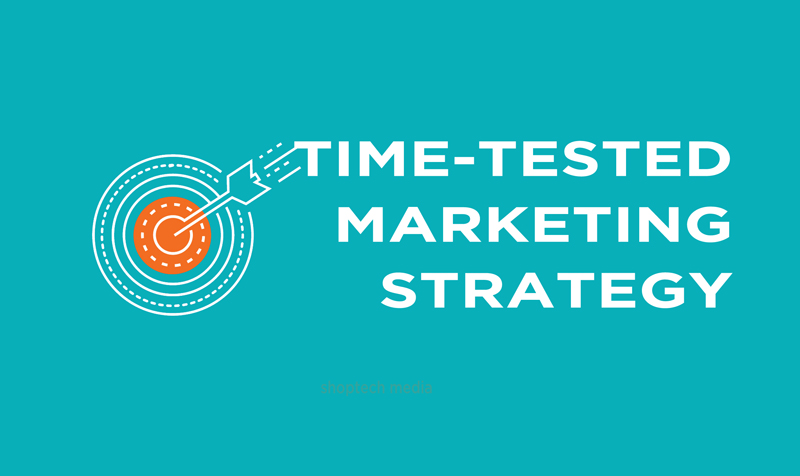Effective ecommerce marketing strategy that works starts from the moment a plan is placed to the time a potential customer lands on your website, down to the checkout page, and ends in customer support and re-targeting.
I prefer to ground it in the concept of “building” an ecommerce marketing strategy rather than just “making” one. The reason is that, this whole process needs to be taken a step at a time, and not just putting everything down.
So, let’s get started and build our ecommerce marketing strategy, step-by-step.
Step #1. Website optimization
Everything starts in the development stages of your ecommerce! A lot of websites are built without taking into account optimization at the point of build.
Website Optimization happens the moment a plan to create one is put in place. Your website is your address, the place where customers shop, at the same time have an experience that comes nothing short of wonderful.
Intuitive layouts, easy-to-read language, simple navigation, and a variety of design elements must lead to a clear call-to-action. Keep it easy for consumers to find the product or information they need. Strive to present your website as calming to the eye as possible. And when necessary, create landing pages, and avoid cluttered product pages.
Website optimization is a tested and effective ecommerce marketing strategy that works all the time!
Step #2. Search Engine Optimization
After your ecommerce website is done and optimized, the next step is to do SEO. SEO or search engine optimization is an enormous and varied task handled usually by a team of specialist and costs ranging from a thousand to tens of thousands of dollars monthly.
The goal is How To Ensure Your ecommerce website is being found in Google search?
Some of the things to take into consideration regarding SEO are the following:
- Website analysis–Keywords, backlinks, structured data, schema and content are but a few of the important areas to consider in this step.
- Keyword optimization–Researching keywords, keywords density.
- Content generation–textual, informational, and graphical content that constitute the page.
- Maintaining an updated understanding of what the major search engines, especially Google, are using as criteria for SERP.
- Information technology skills–strong background in HTML, CSS, a number of programming languages and familiarity with a variety of operating systems and hardware platforms.
- Client management–an optimized site must, first of all, conform to the business strategy of the site owner.
- Analytical processing–ability to analyze problems, find appropriate resources and develop solutions.
The above list is summarized in the following work an SEO guy does:
- Content writing and content marketing–Many SEO specialists acquire this skill early in their careers, as it requires less technical knowledge than other SEO professional roles.
- Link builder–This is an SEO specialization that is growing in importance as more search engines have adopted backlinking as an important part of their search algorithms.
- Web researcher–The Internet is a complex, dynamic environment that requires constant analysis and evaluation.
Search Engine Optimization is a tested ecommerce marketing strategy that works every time! If you can do this without going to SEO companies, you are well on your way to an ultra successful ecommerce business venture!
Step #3. Mobile optimization
Responsive design used to dominated the web, but not anymore! Today, mobile optimization is the new preferable strategy of choice for business and personal sites.
Instead of simply compressing and slightly rearranging the content on the screen, the entire user experience is built around smaller devices .
Mobile optimization makes the conversion process easier and less stressful on the user. Below are some of the mark of a mobile optimized ecommerce website:
-Smaller images
-Auto-fill form fields
-Auto-detect location settings
-Guest checkout option
-Multiple screens instead of scrolling
Step #4. Website content
Content Writing is not just about writing any contents. The scope include but not limited to researching industry-related topics (combining online sources, interviews and studies), writing clear marketing copy to promote our products/services, and preparing well-structured drafts using Content Management Systems or a blog.
Blogging Help Boost Your Ecommerce SEO
Responsibilities
-Write clear marketing copy to promote for products/services
-Prepare well-structured drafts using Content Management Systems
-Proofread and edit blog posts before publication
-Submit work to editors for input and approval
-Coordinate with marketing and design teams to illustrate articles
-Conduct simple keyword research and use SEO guidelines to increase web traffic
-Promote content on social media
-Identify customers’ needs and gaps in the contents and recommend new topics
-Ensure all-around consistency (style, fonts, images and tone)
-Update website content as needed
Step #5. Content marketing
Everybody on the planet starts their search in the same place no matter what they are looking for—the Google search bar. They used to joke that the best place to hide a dead body is on the second or third page of the Google search results because nobody ever goes there! If you don’t land your best content on that first search page to help someone educate themselves on a particular business problem, then you are out of sight, and out of the business.
Search engines such as Google love fresh contents. By creating contents through various verticals, it creates brand awareness for your business. This makes your content marketing more like a media publishing and provide search engines with contents to serve their users.
Consistently generating various forms of content including customer content, thought leadership pieces, press releases, analyst content, research, solution briefs, partner briefs, channel content, content for managed service providers, video interviews, blogs, etc, content marketing is one of the most tested ecommerce marketing strategy that really works.
Step #6. Email marketing
Email marketing is one of the most effective ways to reach and engage your audience. In fact, the importance of email marketing is so great that we recommend most businesses develop a plan for implementation by 2020.
An email is an essential part of our lives as professionals, individuals, and, yes, especially consumers. Think about this, how many people do you know is without an email address? There’s a good chance that you can count these people on one hand.
No matter what new tactics or strategies arise in the next few years in the digital marketing world, email marketing is still one of the most cost-effective ecommerce marketing strategy that really really work.
Other notable ecommerce strategies that are effective in addition to the 6 time-tested ones are:
-Social media marketing. I originally planned to include this in the top 6 list.. but opted not to in lieu of email marketing.
-Pay-per-click marketing. This one needs a little caution as a lot of people have lost considerable amount of money going this route.. including yourstruly.
-Re-targeting
In Conclusion
REMINDER: An ecommerce marketing strategy is slightly different than a strategy for other websites not selling products. Your main focus needs to be on building a great shopping experience – from the moment a potential customer lands on your website to the checkout page.
Let us know what you think about this 6 time-tested ecommerce marketing strategies in the comment section!







